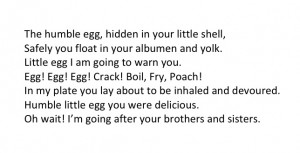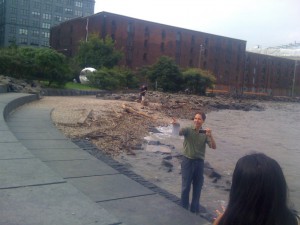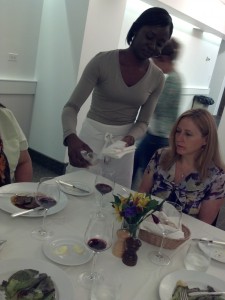Last fall, Professors Sandra Cheng (HUM, Living Lab Fellow), Kylie Garcelon (HGMT, Living Lab Associate Fellow), and Joanne Jacus (HGMT) participated in “The Art of Food,” a learning community between the Hospitality Management and Humanities Departments. Entry-level students enrolled in their first lab courses, either Professor Jacus’s Baking and Pastry I (HGMT 1204) or Professor Garcelon’s Culinary I (HGMT 1203), came together in Professor Cheng’s art history course dedicated to studying the history of photography (ARTH 1100). One objective of the learning community was to foster stronger bonds between Hospitality students in order to emphasize the importance of teamwork, an essential practice for success in culinary labs and in the daily operations of commercial kitchens.
M.F.K. Fisher’s “How not to boil an egg” provided the theme for the learning community as a shared reading between all three classes. Students engaged with the Fisher reading in individual sections as well as in a shared dining experience, in which faculty and students dined together. The shared meal included a shared poetry writing exercise that reinforced the structure of group work promoted in culinary labs and in the art history class.
Whether in culinary labs or the lecture class, students were asked to contemplate creative expression in a myriad of ways, which included considering the visual elements of culinary production, the study of poetry in culinary labs, or taking photographs of eggs for group projects on important photographers. All three classes shared a central website on the OpenLab for the learning community, which was filled with student reflections and examples of student photography. The learning community culminated in smart phone photo contest, from which the winning photos will be exhibited in City Tech’s Janet Lefler Dining Room.









